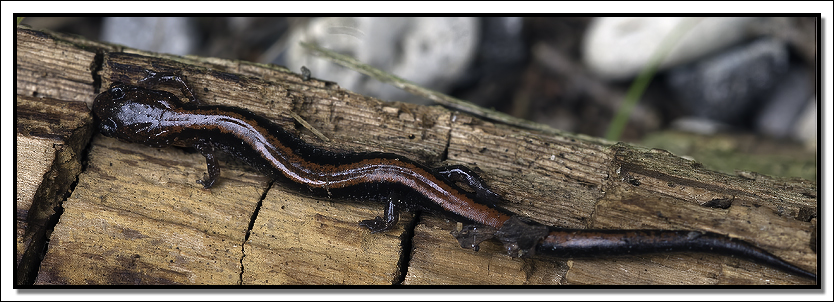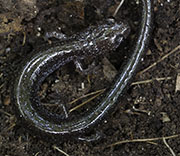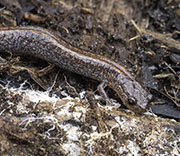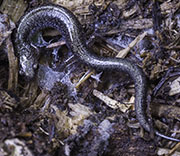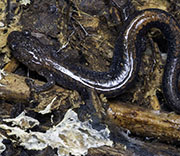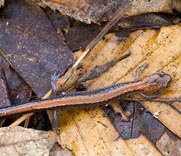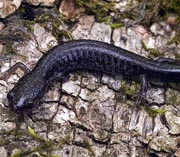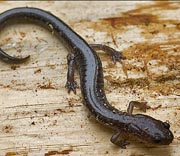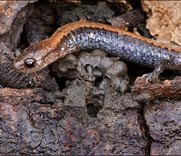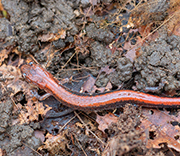
Eastern Red-backed Salamander (Plethodon cinereus sirtalis)
The Red-backed Salamander is a small and slender salamander that has two different colour phases. The more typical is black or dark grey with a broad, straight-edged stripe down the back from head to tail. This stripe is usually red or brownish orange but may be yellow, pink or grey. The second phase is known as the lead-backed phase which is solid black or dark grey. In both phases, this salamander has black and white mottling on the belly and lower sides.
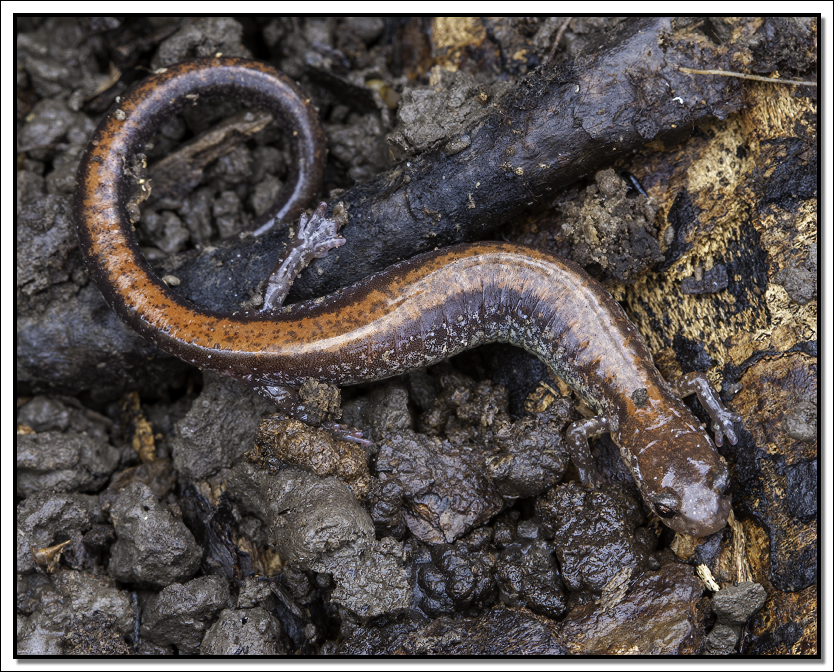
The Red-backed Salamander is completely terrestrial. It is a common species that lives in moist forests where they burrow in the leaf litter and soil where they feed on worms, insects and other forest invertebrates. They overwinter in the soil.
They are lungless salamanders because they do not have lungs; instead, they absorb oxygen directly through their skin. They must remain moist at all times so that oxygen and carbon dioxide can diffuse through the skin.
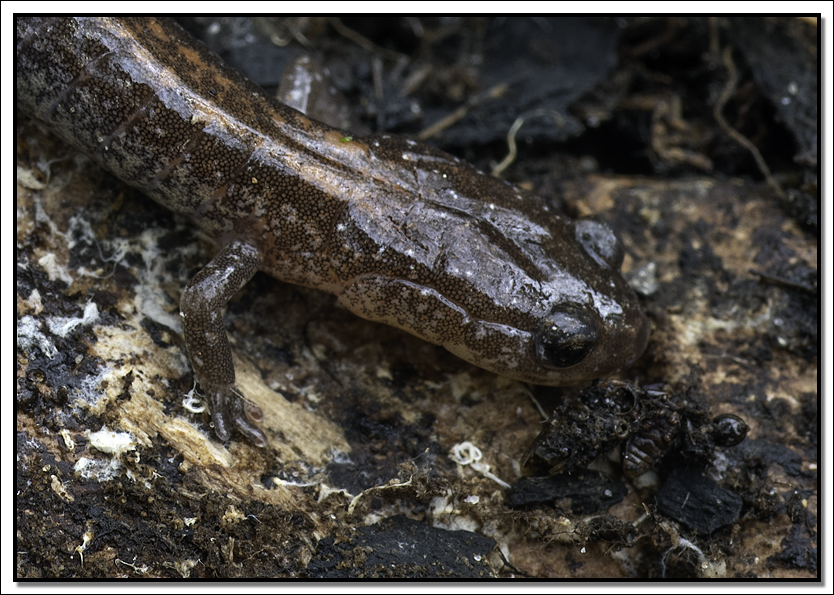
Red-backed Salamander do not need water to reproduce. They lay from three to 15 eggs in June or July in a rotting stump or log . The eggs are laid on the land and the entire larvae stage occurs inside the egg. The females tend the eggs for six to eight weeks and stay with the hatchlings for another one to three weeks.
